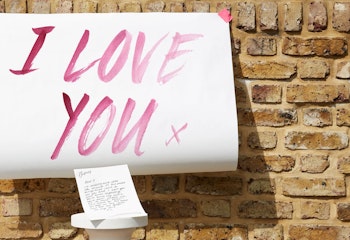We’re bombarded with messages all day, every day. Red dots punctuating our lives with words (and plenty of emojis) from friends and family, work and advertisers. And, for a large part, it’s great. We get to stay in touch with people we would have otherwise found it hard to and manage to make last minute plans we would have struggled to have done before – but it also means that the important things people have to say can get drowned out in a sea of endless notifications.
A handwritten note, from ‘thank you’ to ‘I’m sorry’, is bigger than the space it fills on the card or letter it’s written on. Its impact is magnified and its meaning illuminated by the time and care taken to write and send it. And the scarcity of the handwritten in the easy, digital age of the instant message marks it out all the more. When you send someone a handwritten note, the very fact that you’ve handwritten it is saying you really mean this, and your recipient can tell. Whether revealing true love, sending an empathetic hug, or a display of pride, the words you write will ring loud and true with the receiver.


There’s a tangible connection between reader and writer too. The message is not trapped behind a screen looking the same as every other one you receive. These are the actual words written by the hand of the person who’s thought them, in their own unique handwriting style. In this way, ‘How are you?’, the opening filler of everyday emails, becomes repurposed with an actual desire to hear the answer. A congratulatory ‘we’re so proud of you’ glows with the beaming pride of the author. And a personally penned ‘I love you’ strikes the heart with the power of Cupid’s arrow.
The message here is loud and clear: if you’ve got something to say, say it with pen and paper.























